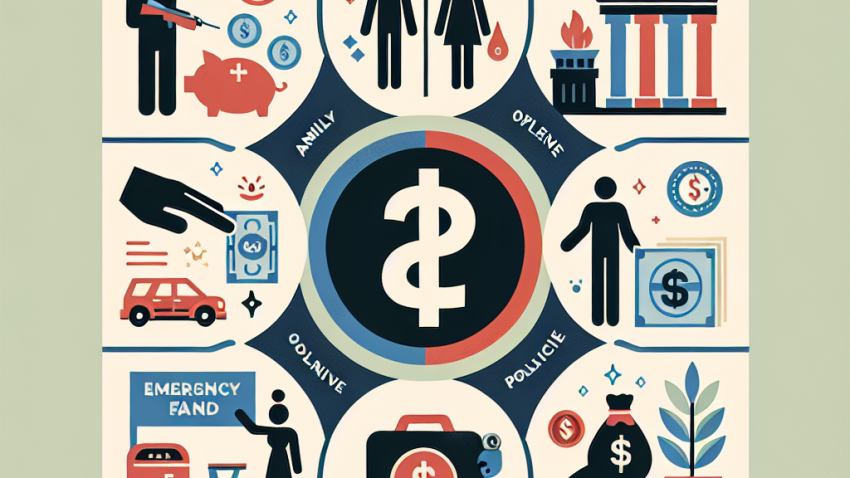
How I Built a 4-Figure Emergency Fund While Working Full-Time
How to Start Investing with Just $100
Think investing is only for rich folks with yachts, trust funds, and a dog named “Dividend”? Think again. I’m Rachel Simmons — your Financial Independence cheerleader, coffee-fueled strategist, and firm believer that even $100 can flip the script on your future. Let’s turn that modest Benjamin into your ticket to a wealthier, freer life. No fluff, no Wall Street jargon, just straight talk and smart steps.
Why $100 Is More Powerful Than You Think
Let’s get one thing straight: $100 won’t buy you beachfront property, but it can buy you something way better — a mindset shift. When you realize that every dollar is a tool (not just a unit of spending), you start using money differently. Starting small builds confidence and discipline. Compound interest doesn’t care if you started with $100 or $10,000 — it just cares that you started.
So What Can $100 Really Do?
- Break the “I’ll invest when I have more money” cycle
- Teach foundational investing habits
- Get your feet wet without risking your rent
- Introduce you to platforms, diversification, and market behavior
In short: it gets the ball rolling. And once it’s rolling, it doesn’t stop.
Step 1: Fix Your Financial Foundation
Before throwing your hundred into an investment app, make sure you’ve got your basics covered. Like building a house — you don’t decorate the attic before laying the foundation.
Checklist Before You Invest
- Emergency Fund: At least $500–$1,000 stashed away. Life happens, and investments aren’t ATMs.
- High-Interest Debt: Still got credit cards charging 25% interest? Attack those first. Your investment returns won’t outpace that kind of financial bleeding.
- Financial Goals: Define your “why.” Investing for retirement? A sabbatical at 35? The more specific the goal, the clearer your strategy becomes.
Once that’s solid — green light!
Step 2: Choose the Right Investing Platform
In 2024, investing has never been more accessible — or overwhelming. With so many platforms out there, it’s easy to get lost in the weeds. Here’s how to keep it simple:
Look for:
- No Minimums: Some brokerages let you start with as little as $1 (yes, for real).
- Fractional Shares: Want a slice of Amazon or Apple without dropping $100+ per share? Fractional shares are your jam.
- Zero Commission Fees: Platforms like Fidelity, Charles Schwab, or Robinhood charge nada for trades.
Beginner-Friendly Apps to Check Out:
- Fidelity (robust features, solid research, no gimmicks)
- Charles Schwab (great for long-term investors)
- SoFi Invest (slick interface + free financial planning tools)
- M1 Finance (automated investing with customization)
Pick one that feels intuitive — something you’ll actually use. Remember, analysis paralysis is real, and it kills momentum.
Step 3: Decide Where to Put Your Money
Here’s the magic question: What should I invest in? Don’t worry, you’re not expected to understand charts, candlesticks, and fine print on ETFs just yet. Let’s keep it Rachel-real: simple, smart, and oops-proof.
3 Options to Start With Your $100
- Index Funds & ETFs:
These are like the greatest hits of the stock market. A single fund gives you exposure to hundreds (sometimes thousands) of companies.
Examples: S&P 500 ETF (like VOO or SPY), Total Market Funds (like VTI). They spread risk and historically perform well over time. - Target-Date Retirement Funds:
Want autopilot? These funds adjust risk as you age. Pick one with a target year close to your retirement goal (e.g., 2060) and chill. - DIY Stock Picks (if you’re spicy):
Got a hunch about tech or renewable energy? You can dabble by buying fractional shares, but keep it educational — not emotional.
My suggestion? Start with a diversified ETF. Learn as you go. You can always get fancy later.
Step 4: Automate & Watch It Grow
The difference between “trying” investing and actually becoming an investor? Consistency. Set up recurring contributions, even if it’s $10/week. Your future self will send you thank-you notes daily.
Why Automation Wins:
- Removes emotion (no buying high and panic-selling low)
- Builds wealth without willpower
- Aligns with dollar-cost averaging — the MVP of risk reduction
Pro tip from yours truly: Treat it like a bill. If Netflix gets $15/month, your future deserves at least $20.
Step 5: Keep Learning (But Don’t Overthink It)
You’ve invested. Congrats! Now it’s time to move from curious to confident. Learning doesn’t end here — it’s just getting started.
Quick & Digestible Resources I Love:
- Podcasts: “BiggerPockets Money,” “The Ramsey Show,” or “HerMoney”
- Books: “The Simple Path to Wealth” by JL Collins, “I Will Teach You to Be Rich” by Ramit Sethi
- Courses: Free ones from Coursera or Khan Academy on personal finance and investing
No, you don’t have to become the next Warren Buffett. But financial literacy is like compound interest for your brain — the earlier you start, the more it pays off later.
Common Mistakes to Avoid
Let’s dodge a few rookie mistakes I’ve seen (and made, for the record):
- Over-trading: Chill. Investing isn’t day-trading or gambling. Think marathon, not sprint.
- Following hype: If TikTok says it’s a “guaranteed 10x,” run. If it’s not boring, it might be risky.
- Ignoring fees: Even “free” apps can hide fees inside the funds. Read the fine print.
Remember: smart investors play the long game with calm, clarity, and purpose.
You’re Not Late. You’re Right on Time.
Here’s the real flex: you’re doing something most people won’t. You’re choosing to invest in your future, prioritize freedom, and learn to make money work for you. That’s personal power. That’s financial independence. And it all started with $100.
Need more support, tips or want to connect with our team? Visit our About Us or drop us a line on our Contact Page. Let’s build your financial independence — together.
You’ve got this. I’m cheering for you — latte in hand.









Leave a Reply